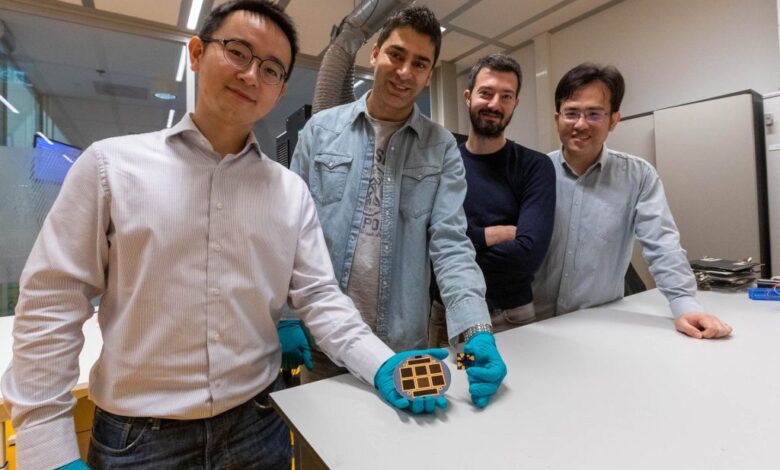Silicon Perovskite solar cell, more than 30% efficiency (once again)

New goals for solar thanks to perovskite solar cell and silicon by Belgian-Dutch
(Sustainabilityenvironment.com) – Exceeded the goal of 30% efficiency for perovskite solar cell and silicon technology. The credit goes to a large group of researchers, partners of Solliance, who joined forces to make the photovoltaic tandem a leap forward. TNO, TU Eindhoven, imec and TU Delft have realized a perovskite-silicon cell capable of converting 30.1% of incident light into electricity.
In fact, the coupled silicon-perovskite is not a novelty. Already in July 2022 the scientists of the EPFL Photovoltaic Laboratory in collaboration with colleagues of the CSEM innovation center, notified the achievement of 31.25% with an architecture 2 terminals. But the research conducted by Solliance partners takes other steps forward, focusing on 4 terminals.
The advantages of tandem photovoltaics
How do works the perovskite solar cell? The tandem approach achieves greater efficiencies than single-junction technology thanks to better exploitation of the solar spectrum. One of the trends that go for the most in this field employs commercial silicon for the lower device and perovskite for the upper cell; The latter is characterized by a highly efficient conversion of ultraviolet and visible light and excellent transparency to near-infrared light.
Read also Efficient and stable perovskite solar cell, NREL record-breaking 100 days
In tandem devices with four terminals (4T) the upper and lower units operate independently of each other, which makes the use of several lower cells possible. “Commercial PERC technology, as well as premium ones such as heterojunction or Topcon or CIGS thin film photovoltaic, can be implemented in a 4T tandem device without almost any modification to the solar cells,” Solliance explains in a press release. “In addition, the four-terminal architecture simplifies the implementation of double-sided tandems to further increase energy yield“.
To achieve their result, the researchers first improved the performance of semitransparent perovskite solar cells, achieving an area of 3mm2 with an efficiency of 19.7% (independently certified value). “This type of solar cell has a highly transparent back contact that allows more than 93% of the near-infrared light to reach the lower device,” explains Dr Mehrdad Najafi of TNO. The latter is a 20mm2 wide heterojunction silicon solar cell. The unit is equipped with “optimized surface passivation, transparent conductive oxides and Cu-plated front contacts”, he adds to Yifeng Zhao, PhD student at TU Delft. The result was presented at the 8th World Conference on Photovoltaic Energy Conversion (WCPEC-8) in Milan.





